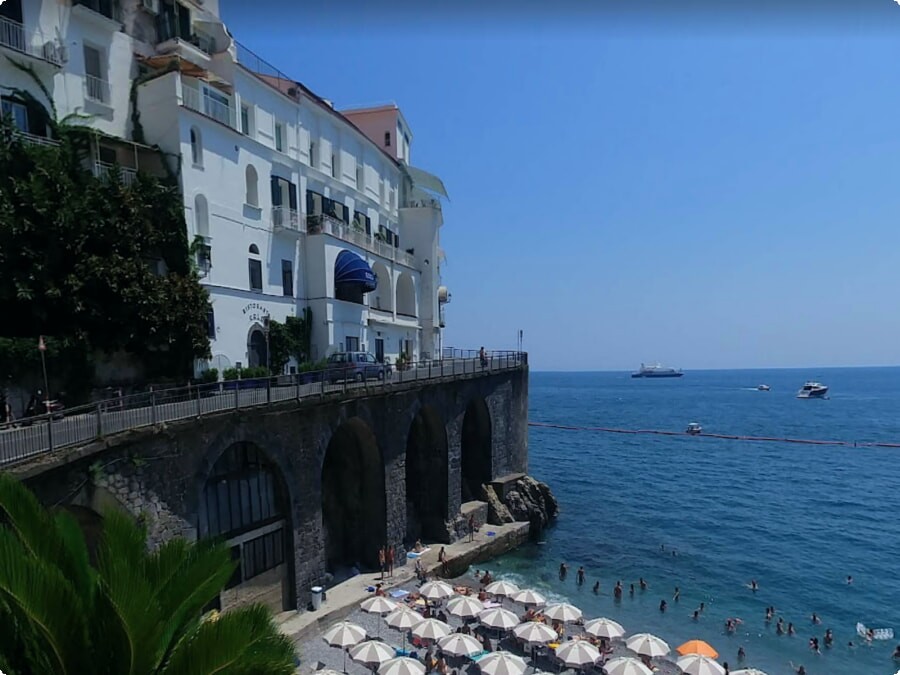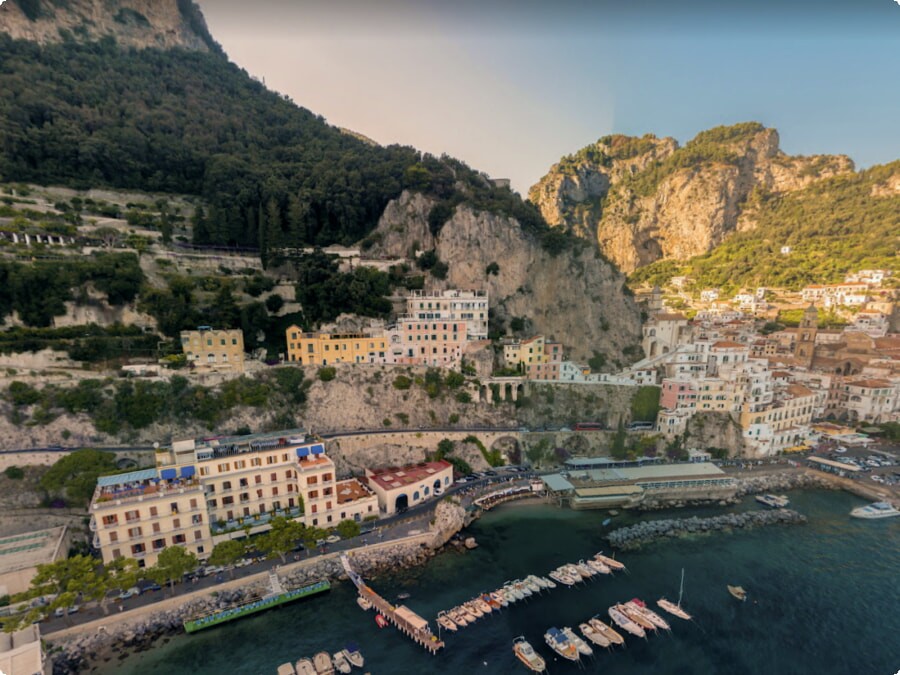How to Travel to Italy on a Budget
One of the main concerns people have when planning a trip to Italy is money. Fortunately, it is possible to save money by traveling to Italy on a budget!
Stay in affordable accommodations such as hostels, bed and breakfasts, or vacation rentals. Eat like a local by visiting inexpensive restaurants or street food stalls.
1. Stay in Budget-Friendly Accommodations
The main expense on any traveler’s budget is accommodations, and Italy offers plenty of options at a variety of price points. Food costs are also comparatively lower than in other European countries, making it possible to have an unforgettable Italian vacation without blowing your whole savings account.
Some of the country’s most famous attractions are notoriously expensive, so if you are on a tight budget it makes sense to skip some of them and find other ways to save. Luckily, there are plenty of free attractions and sightseeing opportunities to keep you entertained around the country, from historic villages to natural sites.
When it comes to accommodation, if you are on a budget it can be wise to avoid large chain hotels in Italy’s most popular locations, especially in Rome and Venice. These places are packed with tourists and can be very expensive, while boutique hotels and pensione (family-run guesthouses) often offer much better rates and more character.
A newer trend in Italy is staying in agriturismo, which is when you stay directly on the countryside, either in a vineyard or a rustic beachside cabin. It’s a great way to enjoy the outdoors, but still have access to the comforts of the city.
Another option for accommodation is monasteries and other religious lodgings, which can be found in almost every city and usually have a more historical vibe than hostels. Websites like Monastery Stays make it easy to book these rooms around the country.
Finally, it’s always a good idea to plan your trip during the shoulder or off season in order to save on airfare, hotels, and other expenses. This may mean sacrificing some of the peak summer weather, but the prices will be significantly cheaper and you’ll get to experience Italy in its less-crowded glory.

2. Eat Local
With the right amount of research and planning, a visit to Italy doesn’t have to break your budget. From visiting iconic locations like Piazza San Marco in Venice or the Spanish Steps in Rome to savoring the finest Italian cuisine — it’s possible to have an affordable trip that still allows you to enjoy all that this country has to offer.
When it comes to food, opting for restaurants with fewer tourists and sticking to the local specialties can help keep costs down. You can also eat like a local by visiting markets and street vendors for more authentic, cheap dishes. If you’re a wine lover, you can also find great deals on bottles at local vineyards and stores.
You can also save on meal costs by bringing your own snacks and drinks, especially if you’re staying in accommodation with a kitchen. Don’t be fooled by an eatery’s modest decor or lack of lavish amenities, some of the best meals in Italy are eaten in humble settings. You can also take advantage of free or discounted admission days at museums and other attractions to cut down on cost.
Lastly, avoid over-spending by researching prices and shopping around for the best deals on activities such as car rentals, public transportation, and tours. Purchasing your tickets ahead of time is another way to save money, and don’t forget to look for discounts and offers on hotels and restaurants.
Lastly, you can further reduce travel expenses by volunteering while in Italy through Worldpackers! From teaching English and Spanish in local schools to helping on organic farms or living in 1000-year-old Tuscan castles, there are many volunteer positions available for all skill sets and interests.

3. Go Off the Beaten Track
Everyone has different definitions of what ‘traveling on a budget’ means, but there are ways to cut costs that can make a big difference to your travel experience. Whether it’s eating meals from the grocery store rather than restaurants or taking advantage of free walking tours, traveling on a budget in Italy is possible with some thoughtful planning.
The biggest expense of a trip to Italy is often airfare, so it’s important to shop around and be flexible with dates if you want to score a deal. Additionally, flying in the fall or spring can be much cheaper than during peak tourist season.
Once you arrive, try to steer clear of major city centers and opt for rural villages or smaller towns that will offer more budget-friendly accommodations and experiences without skimping on charm or history. For example, visitors short on cash in Rome should flee to Castel Gandolfo or Tivoli; those based out of Milan might consider destinations like Como, Lecco, and Cremano; and Florence-based travelers can head to Lucca, Siena, and Prato.
Similarly, while a car is often considered essential for exploring the Italian countryside, the regional train system offers a great way to save money on transportation while still getting around quickly and efficiently. Plus, buying a rail pass ahead of time will likely save you more than purchasing individual tickets as you move between cities or towns.
Italy’s rich history and dynamic culture offer plenty to enjoy, no matter the budget. Thorough research and pre-planning can enable you to relish all the country has to offer without draining your wallet. For a life-changing adventure that also makes a difference, you can volunteer in Italy through Worldpackers to learn about local cultures and make new friends while living on a budget.

4. Rent a Car
Everyone has a different definition of what traveling on a budget means, but if you’re looking to save money in Italy, it’s important to research transportation options before booking your trip. If you’re going to be traveling to places that are off the train route (like Sardinia or the historical region of Lazio), a car may be your only option – though there are cheaper ways to get around than renting and driving a car.
Public transportation in Italy is relatively cheap, especially if you buy your tickets in advance online. You can also take advantage of free or discounted admission days at museums, monuments, and other attractions. In addition, many cities have free walking tours and local markets, so be sure to check out the options before deciding on how you’re going to move about while in Italy!
If you do decide to rent a car in Italy, it’s best to choose a small model. For example, you can rent a car in Rimini from 18 eur per day, in Malpensa Airport - from 17 eur per day. The roads are often narrow, and even the larger cars can be difficult to maneuver in some areas. Choosing a model with a sliding door will also help you avoid denting other cars. And if you’re going to be driving on the Autostrada, be sure to make frequent stops at the rest stations (known as “autogrills”). You can eat, drink, and use the restroom all in one place, which is much faster than stopping at a restaurant every few hours!
If you’re looking for an additional way to save money on your trip to Italy, consider volunteering! There are a variety of volunteer opportunities available in Italy, from teaching English to working on organic farms. Just be sure to check the requirements for the specific position that you’re interested in before booking your trip – and don’t forget to bring sunscreen!

5. Take the Train
Taking the train is one of the most convenient and affordable ways to travel to Italy. Not only does it save you the cost of renting a car, but it also gets you right to the center of each city, where you can explore on foot.
You can also take advantage of regional train passes if possible, which will help you save money over time when traveling between cities and towns. In addition, it’s a good idea to set yourself a daily budget before your trip and stick to it – this will allow you to focus on what is truly important, while still being able to enjoy some of the finer things in life, like the local markets and restaurants, or walking around instead of taking taxis everywhere.
When you take the train, it’s important to arrive at the station with plenty of time before your train departs. This will give you the opportunity to avoid any long security lines and to check the electronic boards which display your train number and its corresponding track number (or bin./binario in Italian). The trains vary in terms of their standard – Intercity trains have air conditioning, while regional trains do not and usually cannot be reserved.
Lastly, be sure to always bring water with you when traveling on the train – it is free and usually served in large bottles. This will help you save on buying bottled water, and it’s also a great way to keep hydrated when sightseeing. In addition, many of the local shops and restaurants will have free tap water for customers – just ask them to open the bottle.